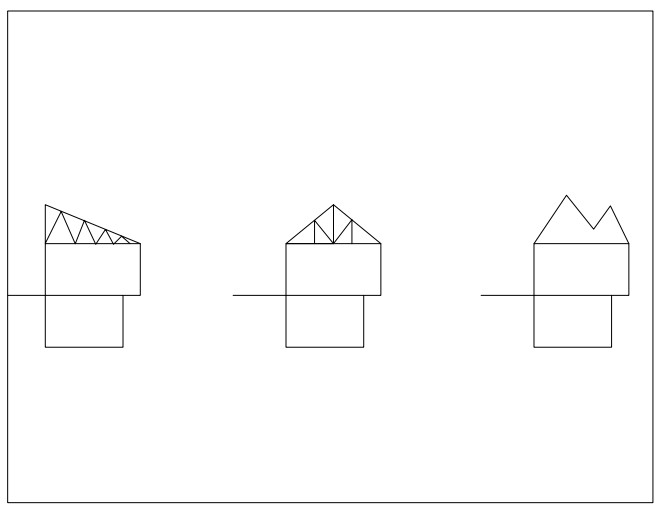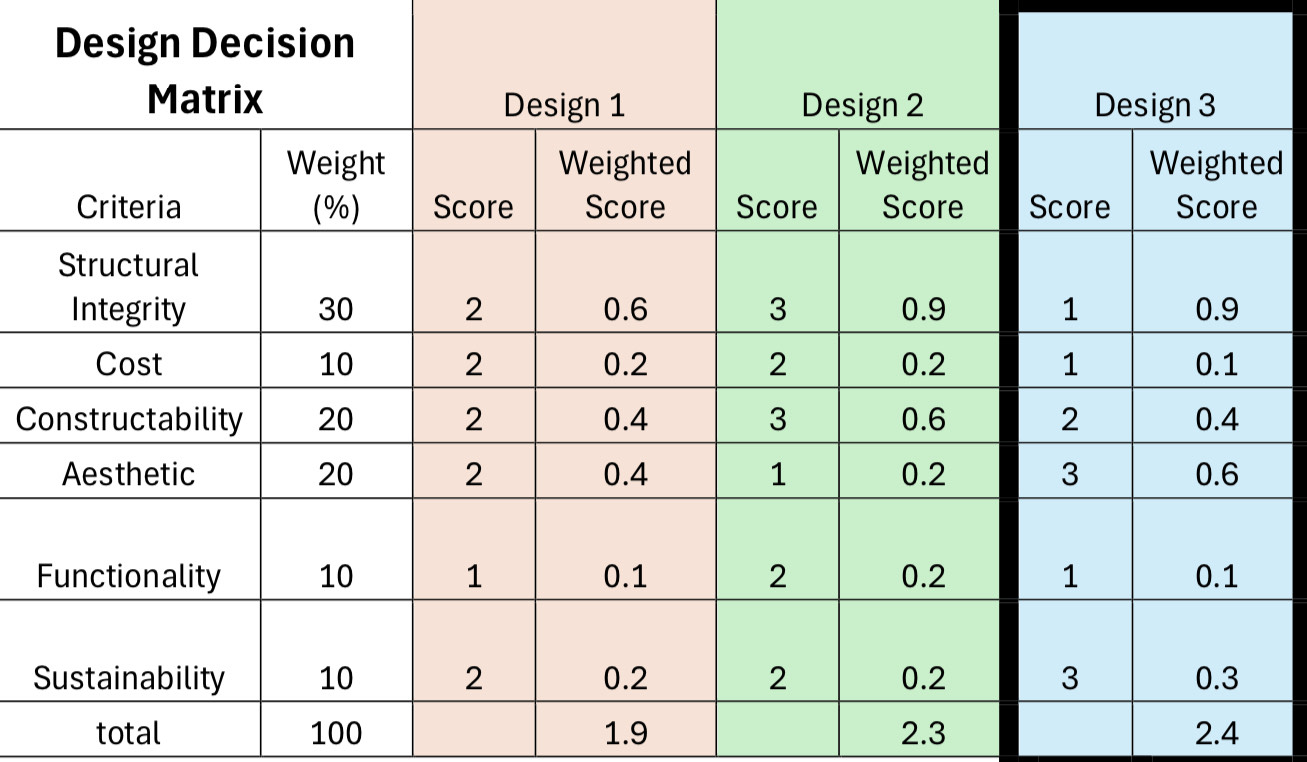Design alternatives differ in the type of roof. The deflection beam will be attached to the 2nd floor system for all design alternatives as pictured below. Windows are not pictured in the simple design alternatives.
Design 1 has a shed roof incorporated into the structure.
Design 2 has an Open Gable incorporated into the structure.
Design 3 has an M Shape incorporated into the structure.
Please Click Here to Refer to the Timber-Strong Design Build 2025 Rules for Further Information on Design Criteria and Constraints.

DESIGN 1
DESIGN 2
DESIGN 3
The proposed structure was evaluated and selected using the table below. Key criteria components were used such as the structural integrity, cost, constructability, aesthetics, functionality, and sustainability. A scale of 1 to 3 was used used to rate each criteria, with 3 being the best rating. Each design then had a totaled value to provide a form of comparison. The highest scored Design was Design 3. This approach ensures a balanced decision.

The proposed Timber Type selection was evaluated using the table below that based its criteria on cost, strength, and constructibility.

Design 3 was selected as the final design for its ability to highlight the natural beauty of Flagstaff, drawing inspiration from the iconic San Francisco Peaks. This design not only met all structural requirements but also captured the essence of the region through its form and layout. Each element—from the roof to the walls and floor—was carefully engineered for durability, sustainability, and aesthetics. For a more detailed look at the layouts and structural elements, please refer to our construction drawings.
This site was created with the Nicepage